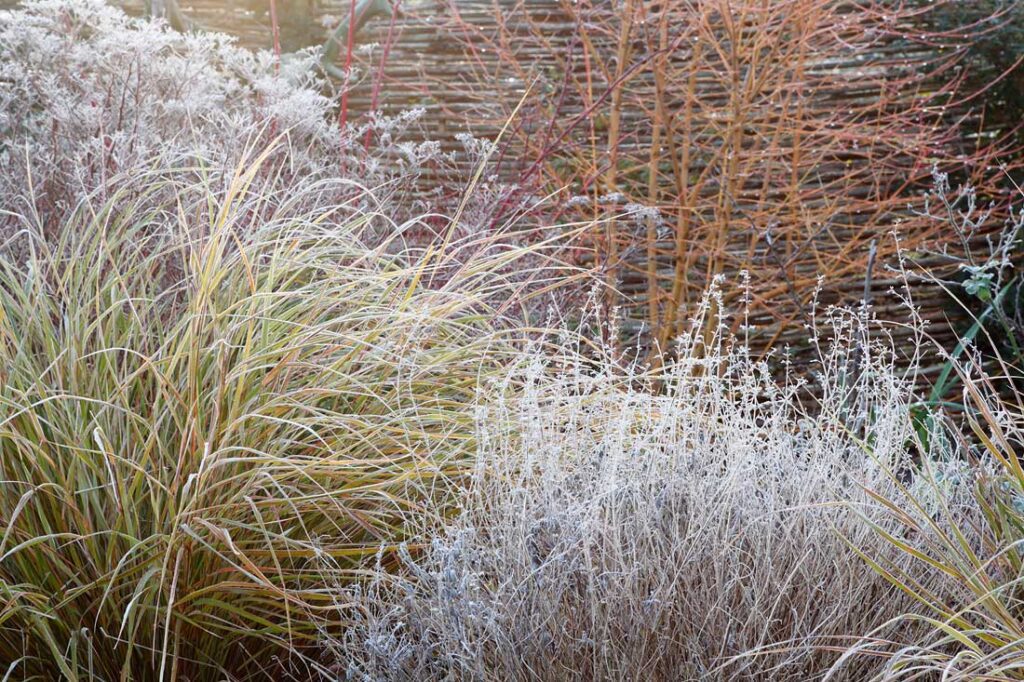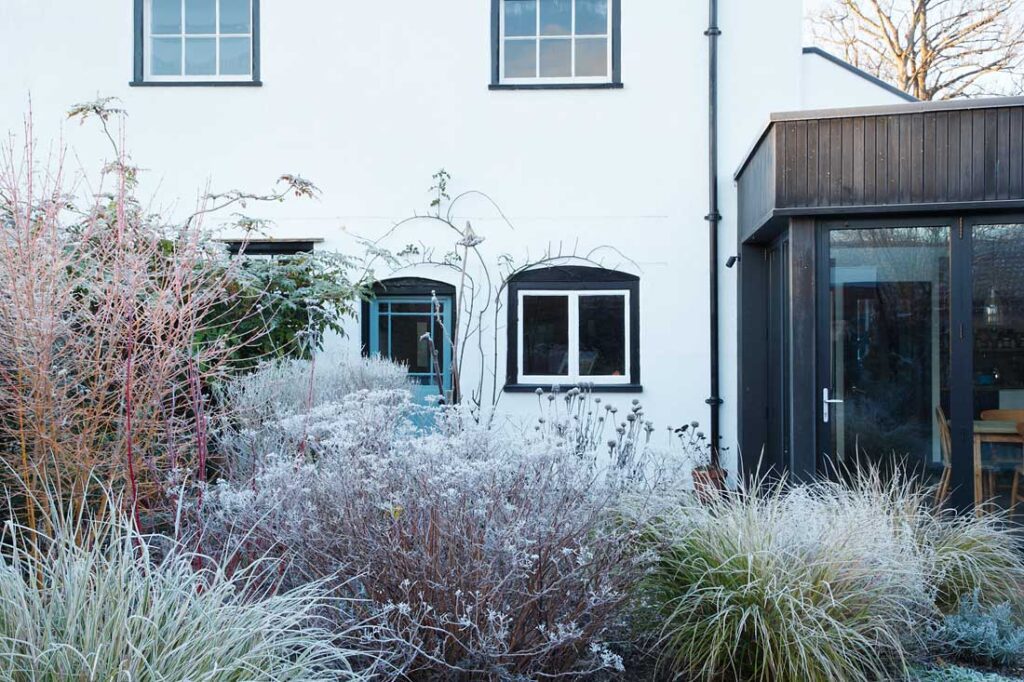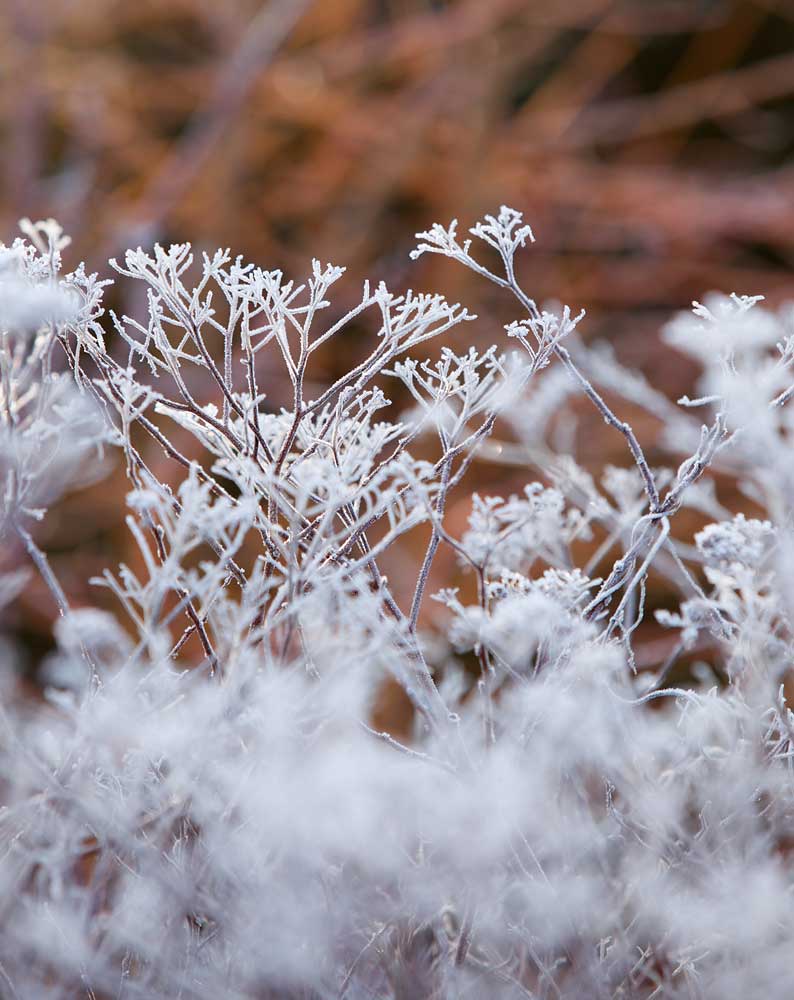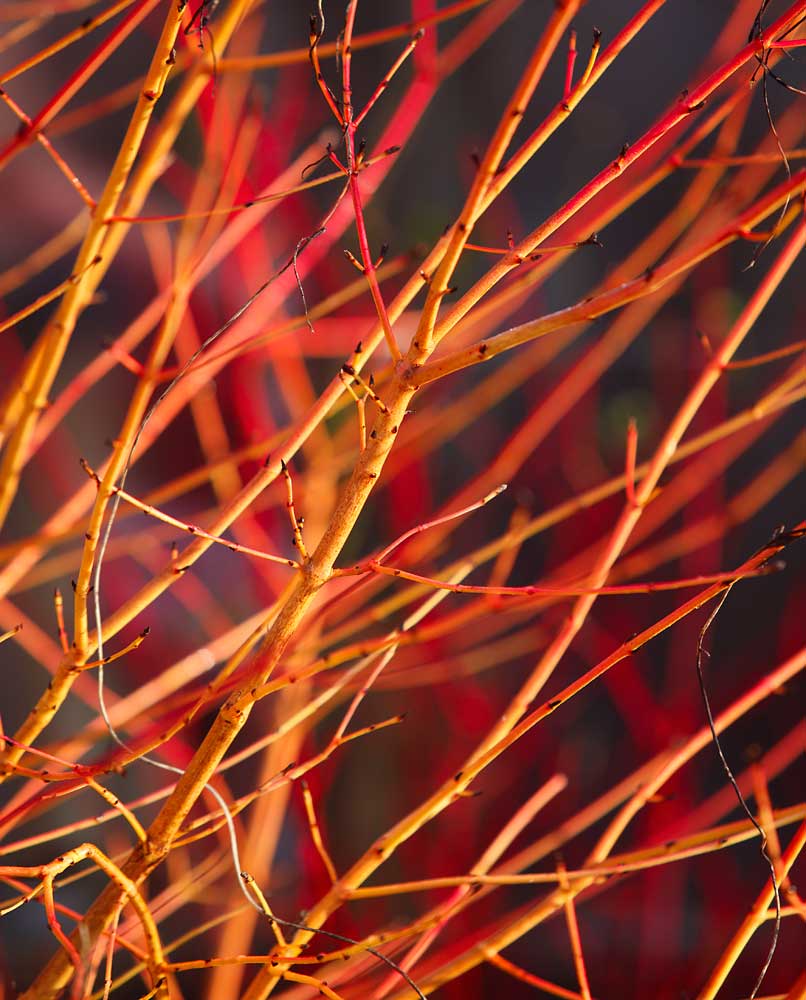The Midwinter Garden
With the garden now in its second winter since the big rebuild, the planting is a little more established and beginning to exhibit elements of its long term structure. It is particularly uplifting to see the developing structure at this time of the year because with most of the leaves gone, structure is very much at the heart of the winter garden. This is mostly a subtle aesthetic; one that I find relies on the transmission of low winter sunlight through the structure. It is an ephemeral beauty, treasured because of the rarity of sunny winter days. On such days, especially in the morning, I love the way the hazel hurdle fencing on the east side of the garden lets random slithers of light through. If it has been raining the night before, water droplets are held in the gaps between the woven hazel stems and refract the light into a myriad of jewel-like colours. If not, I am content with appreciating the backlit tangle of rose branches that have worked through the hurdles using them for support; they will consume the hazel one day.


Then of course there is frost. If there were no bare branches or seed heads or evergreen leaves, there would be nowhere for frost to settle and delight us with its transformative desaturating, dust-like presence. But frost is now even rarer than winter sunshine and if truth be told, most of the season is defined by flat, grey skies and joy-sapping rain. These days of dreich, that bring such gloom to the mood of the nation between December and March, were my primary concern when I was designing the garden. With such a prominent visual relationship between house and garden, I couldn’t face the prospect of overlooking nothing more than a medley of browns and bare soil for most of the off-season. Therefore, the very first plants to earn their place in the scheme were those at their best in these challenging winter months. A winter flowering cherry, Prunus x subhirtella ‘Autumnalis’ was top of the list, swiftly followed by two species of dogwood, Cornus sanguinea ‘Midwinter Fire’ and Cornus alba ‘Westonbirt’. The cherry flowers fulsomely before Christmas but is then stripped bare again by heavy wind and rain (although it does seem to be gearing up for a second flourish at the moment). For solid, reliable winter colour, nothing beats the fiery young stems of the dogwood. Even on the darkest, drizzliest winter afternoon, the colour pops from the gloom and steals the show in a way that I am yet to see matched by any winter flowering shrubs. It may spend the summer as nothing more exciting than a leafy bush but I don’t mind that in the slightest. At that time of the year it is an excellent foil for the flamboyant summer flowers that show off all around it, taunting it with their effortless high-season colour. I won’t let them bully it though. In this small garden, everything must earn its keep and in the height of summer, some might question what it is that the dogwood brings to the party. My memory is longer than this though and the dogwood stays, under my protection if necessary. It has earned its keep. It was there for me in the darkest hours, when all the summer extroverts had withdrawn into the bare soil to sleep it off; a beacon of colour when I needed it most.












Jean sye
Hello Ivery much enjoyed your account of. Double housemy husband and i restored three houses in tewkesbury, two, and somerset now we are 96 I am in a wheelchair. Groan!